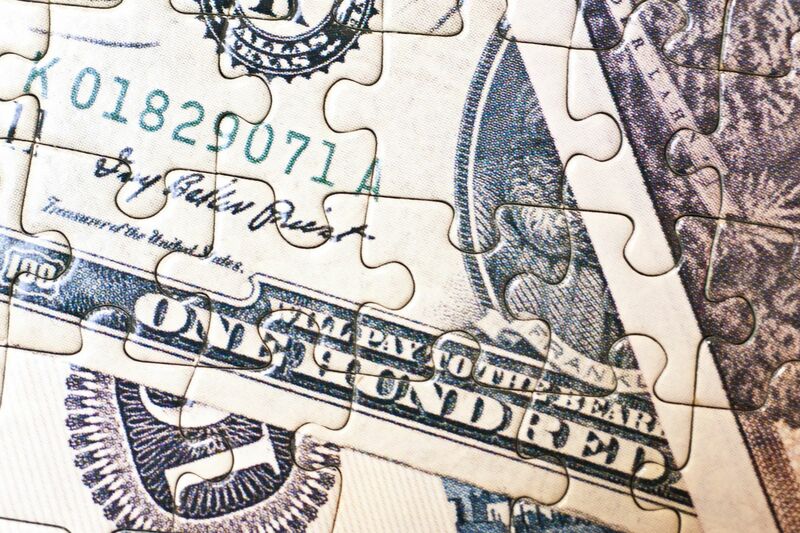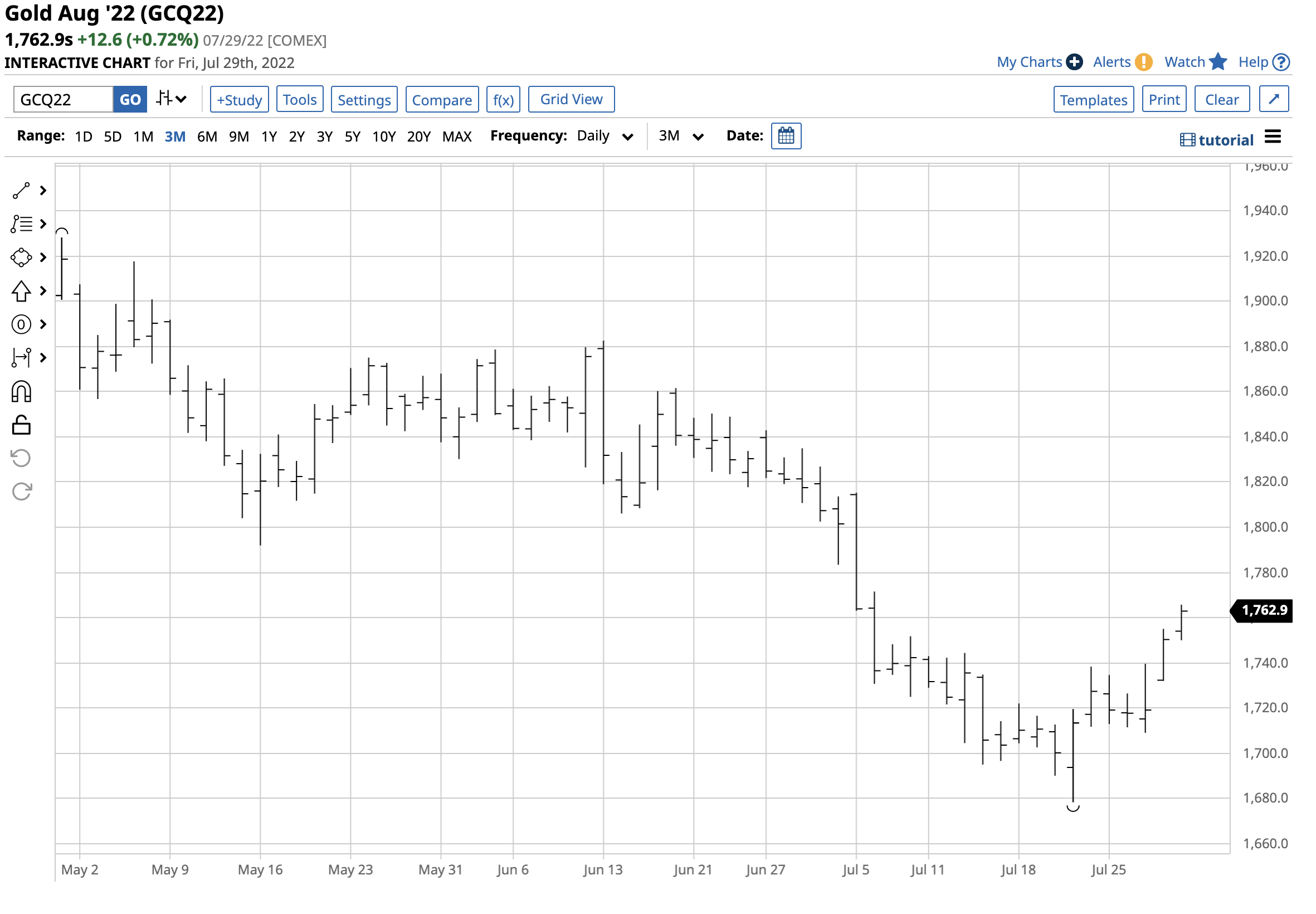
Inflation and recession are a formula for stagflation, an economic condition that causes fits for central bankers who seek price stability and full employment. The Fed’s mandate becomes challenging when stagflation grips the economic landscape. The Fed has monetary policy tools that can impact the economy’s demand side, but supply-side issues are another issue. The war in Ukraine, sanctions on Russia, and Russian retaliation have pushed food and energy prices to the highest level in years. Meanwhile, gasoline, soft red winter wheat, and other commodities have soared to record peaks.
The US central bank is pulling out all the stops to battle inflation, but those tools may only slow an already shaky economy over the coming months.
The Fed announces another 75-basis point hike
On July 27, the US Federal Reserve increased the short-term Fed Funds Rate by 75 basis points to a range of 2.25% to 2.50%. The central bank told markets that ongoing increases to address the highest inflation in over four decades are “appropriate.” The Fed will continue its quantitative tightening program to reduce its swollen balance sheet, citing robust job gains and elevated inflation from food and energy costs.
While the central bank said that the war in Ukraine remains a danger for inflation, it removed any mention of COVID-19 lockdowns in China in the July statement. The decision to hike rates by three-quarters of one percent was unanimous. Meanwhile, the Fed delivered precisely what the market had expected at the June meeting, and the FOMC will not meet again until September.
GDP declines, again
On July 28, the US Bureau of Economic Analysis said that gross domestic product fell 0.9% at an annualized pace in Q2 2022, following a 1.6% drop in the first quarter. The decline was broad-based with decreases in inventories, residential and nonresidential investment, and government spending at the federal, state, and local levels.
The textbook definition of a recession is two consecutive quarters of GDP declines, and the Q2 data met those requirements.
Stagflation has arrived
Stagflation is challenging for central bankers because the tools to deal with inflation are contrary to those necessary to address a recession. There is now an emerging debate whether the US economy is in a recession, given the level of job growth.
With the US mid-term elections on the horizon, the administration is balking at defining the latest GDP data as a validation that the economy is in a recession. At the same time, inflation has remained at its highest level since the early 1980s. The data is clear, and it points to a stagflationary environment.
Inflation is not coming down all that quickly
Some commodity prices provide evidence that inflationary pressures are abating.

The chart shows that Doctor Copper, the commodity that tends to diagnose the health and wellbeing of the global economy, has issued a warning over the past weeks. Nearby COMEX copper futures dropped from a record $5.01 high in March 2022 to a low of $3.15 per pound in mid-July, an over 37% decline. At below the $3.60 level on July 29, copper remains closer to the recent low than the March all-time peak. Other industrial metal prices have declined alongside the red nonferrous metal.
Meanwhile, food and energy prices remain at multi-year highs because of supply-side economic forces. Russia is a leading fossil fuel producer, and Russia and Ukraine are Europe’s breadbasket and significant worldwide exporters of wheat, corn, barley, and other grains. Central bank interest rate policies can address the economy’s demand side, but the supply-side problems caused by the war in Ukraine and geopolitical tensions are another story.
As the tensions between China/Russia and the US/Europe continue, sanctions and trade restrictions will continue to distort and influence the supply-demand fundamentals for food and energy commodities. The high prices feed inflation as US GDP contracts and signal a recession. While the Fed is committed to using monetary policy tools to lower inflation, the geopolitical landscape complicates its job. The bottom line is that inflation may not be coming down too soon, and the market’s reaction to the latest Fed Rate hike shows that recessionary pressures in the wake of the latest GDP report may handcuff the central bank when it comes to future rate hikes. One of the leading inflation barometers, gold, moved higher in the aftermath of the seventy-five-basis point rate hike and decline in Q2 GDP.

The short-term gold chart shows the yellow metal fell to a low of $1,678.40 on July 21. The low was significant for two reasons. First, gold held above the March 2021 $1,673.70 low and critical technical support level. Second, on July 21, gold futures put in a bullish key reversal pattern on the daily chart, moving to a lower low than on July 20 and closing above the July 20 high. Gold was trading above the $1760 level on July 29 as the leading precious metal rallied after the Fed meeting and the Q2 GDP data. Metals and grain futures prices also moved to the upside late last week.
Moreover, the stock market moved higher at the end of last week as market participants believed that the recessionary pressures could curtail and limit future interest rate hikes. After reaching a low in mid-June, the tech-heavy NASDAQ has been making higher lows and higher highs over the past weeks. Bonds have also been recovering since the June 16 low.
Expect volatility in markets, and you will not be disappointed
Markets reflect the economic and geopolitical landscapes. In the wake of the global pandemic, Russia invaded Ukraine, making 2022 anything but an ordinary time in history. The bifurcation of global nuclear powers, trade issues, and political division within the US, the world’s leading economy, create significant uncertainty. Volatility is a paradise for nimble traders with their fingers on the pulse of markets, but it can be a nightmare for passive investors. Wide price variance will likely continue over the coming weeks and months.
The Fed’s commitment to fighting inflation and economic contraction may only exacerbate asset price volatility. During the summer, low liquidity only increases price variance as bids and offers evaporate during market moves. The message is that all market participants must exercise caution and approach markets with a risk-reward plan, reflecting the potential for wide price swings. Markets require traders and investors to take more risks when participating, and reward horizons should always be a function of the risk level.
One of the risks for markets is that the Fed and administration that waited too long to address inflation in 2021 could be doing the same when it comes to an economic slowdown in 2022.
More Stock Market News from Barchart


/AI%20(artificial%20intelligence)/Businessman%20touching%20the%20brain%20working%20of%20Artificial%20Intelligence%20(AI)%20Automation%20by%20Suttiphong%20Chandaeng%20via%20Shutterstock.jpg)
/Intel%20Corp_%20Santa%20Clara%20campus-by%20jejim%20via%20Shutterstock.jpg)
/EV%20in%20showroom%20by%20Robert%20Way%20via%20Shutterstock.jpg)

